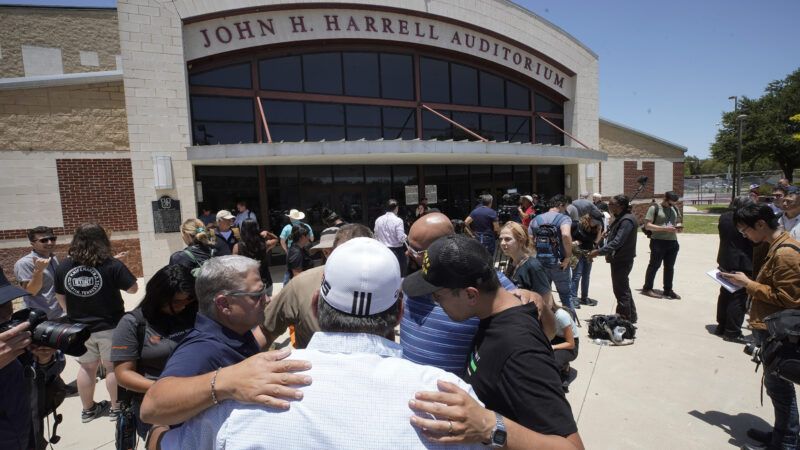There Have Been 13 Mass School Shootings Since 1966, Not 27 This Year
Don't conflate mass shootings with school shootings.

For many people, the Uvalde, Texas, mass shooting—which claimed the lives of at least 19 children and two adults—seemed all the more horrible after they learned it was the 27th school shooting so far this year. That fact makes it harder to view Uvalde as any kind of isolated incident.
An NPR article highlighting this statistic has been shared frequently on social media. The headline, "27 school shootings have taken place so far this year," probably gave many readers the impression that gun-related killings in schools have been especially high this year, even before Uvalde. Naturally, the prospect of 26 other previously unnoticed mass shooting events in schools should provoke alarm. It should also raise eyebrows.
The problem here is that three very differently defined terms are being used somewhat incautiously and interchangeably: school shooting, mass shooting, and mass school shooting. Uvalde was a mass school shooting; the 26 previous tragedies at schools this year were not.
The difference is significant. Education Week, which tracks all school shootings, defines them as incidents in which a person other than the suspect suffers a bullet wound on school property. Many of the 26 previous shootings involved disputes between students in parking lots, or after athletic events, and all of them resulted in one or zero deaths. These deaths are still incredibly tragic, of course. But they are fundamentally unlike what happened in Uvalde.
Uvalde is a mass school shooting. This is defined in different ways too: an incident in which at least four people (some counters make it three) are shot and/or killed. The Gun Violence Archive counts incidents in which at least four people were shot. Under this definition, many incidents of street crime and domestic violence count as mass shootings, even if no deaths result. A stricter tally of mass school shootings, conducted by criminologists for Scientific American, only includes incidents where the shootings resulted in at least four deaths. Using their criteria, the number of mass school shootings in the U.S. since the year 1966 is 13. These crimes claimed the lives of 146 people in total.
Obviously, 13 incidents in the last 56 years is a very different statistic than 27 incidents in the last few months. The two figures are so far apart because they measure separate things. One-off gun incidents are a serious problem in the U.S., and those taking place at schools are no exception. Mass casualty events, on the other hand, constitute less than 1 percent of all gun deaths. Suicides and non–mass-casualty murders—usually carried out with handguns rather than assault rifles—constitute the overwhelming majority of gun crimes.
Given the sheer horror of the violence in Uvalde this week, it's understandable that the public is interested in ensuring that such a thing never happens again. But for the policy debate to be fruitful, people need to understand the actual contours of the problem.


Show Comments (286)